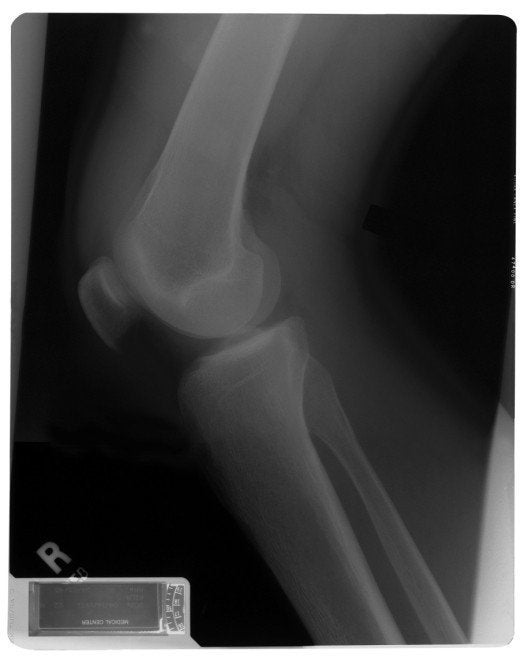
In my mid-40s, I damaged my knees climbing a lot of steep hills on my bicycle. I wasn't alarmed at first. But when they failed to improve after many months of physical therapy, I began to wonder if I'd ever heal.
I went to see an orthopedic doctor who, during an exam, had me do a squat as if I were sitting down on an invisible chair. The cartilage in my knee joints made an ugly noise, like someone rolling over a bag full of damp potato chips.
A few minutes later, he delivered his verdict: "Your knees will never get better." My condition (variously diagnosed as patellofemoral pain syndrome or chondromalacia) could worsen into osteoarthritis in as few as several years, he said.
This prognosis depressed me. But I refused to give up without a fight. Though I lacked medical training, I was an Ivy League graduate and veteran journalist. I was trained to sift, analyze and synthesize data.
Thus began a research odyssey. I read medical textbooks and highly specialized journals and discovered some amazing things. This knowledge empowered me to set out on a self-directed recovery program, an experience described in my book, "Saving My Knees."
One discovery above all gave me the courage to persevere: Bad cartilage can heal and get stronger. That claim may seem remarkable. Yet it has been validated by medical studies. I wrote "Saving My Knees" partly because -- to my astonishment -- no knee book I knew of cited these studies and explored their implications.
For example, my doctors (I ended up seeing four specialists) left me deeply pessimistic about damaged knee cartilage ever getting better on its own. After listening to them, I would have guessed that healing of any kind occurred in one or two percent of patients -- at most.
Imagine my surprise to learn that, in a two-year study of 325 subjects, a full 37 percent had a cartilage defect improve somewhere in their knees, as indicated by a magnetic resonance imaging (MRI) exam. That even exceeded the 33 percent rate of those who had a defect worsen.
Who were these lucky people, I wondered, poring over the article in the Archives of Internal Medicine. Did they just happen to be super fit and super healthy? Not so. It turns out "there was no significant difference in chronic knee pain or past knee injury between those who had increases [in cartilage defects] and those who had decreases."
What's more, the study's authors summed up: "The decrease in cartilage defects may represent cartilage repair and healing."
Learning that cartilage may heal at such a high rate was an incredible finding. But which cartilage stands the best chance of improving turned out to be even more incredible. Intuitively, one might assume it's those areas with superficial or shallow damage. Again though, reality confounds expectations.
Australian researchers who decided to study the knees of 86 healthy subjects initially found 19 cartilage defects where at least half the tissue had worn away. Two years later, MRIs inspected the joints again. Of those 19 locations, more than half got better, less than a third became worse, and the rest stayed the same.
Most astounding was what happened at five spots where bone was exposed. Four showed evidence of fresh cartilage during the re-examination. One was essentially at full thickness!
In these two studies cited above, MRI exams captured images of knee cartilage growing thicker. So apparently it can heal, and the worst locations (worn to the bone) often regrow new tissue. But what about changes to the quality, as opposed to the quantity? Can knee cartilage be made stronger when it's damaged or too soft?
A couple of Swedish researchers shed some light on this matter. For their study, Ewa Roos and Leif Dahlberg started out by selecting a tough-luck group of subjects. All had previously undergone knee surgery. Many complained of pain and stiffness in their joints.
Under close supervision, some of the subjects did regular, moderate exercise that included cycling on a stationary bike and performing knee bends with light weights. At the end of four months, their knees were assessed, using a special test called delayed gadolinium-enhanced magnetic resonance imaging, and compared with those of members of a control group.
The results: the exercisers had a significant increase in a key ingredient in knee cartilage known as "glycosaminoglycans." That 50-cent word describes chains of sugars that contribute to the tissue's resiliency, or ability to absorb the constant loads (walking, sitting, carrying weight) of ordinary living.
In the end, what I learned about knee cartilage gave me hope, but also left me stunned. Why didn't any of my four orthopedic doctors mention a single one of these studies? Why isn't more being done to investigate the conditions under which cartilage heals and strengthens without surgical intervention?
My own experience showed me that rehabilitating damaged cartilage is a long, trying process. The condition of this tissue changes very, very slowly. But change it does -- both for better and worse. Today, after a recovery that took almost two years, my knees feel fine and make much less noise.
I have the satisfaction of knowing I proved my doctors wrong. Bad knee cartilage can get better, under the right conditions. Isn't this the kind of uplifting message that's worth shouting from the rooftops and devoting more resources to study?